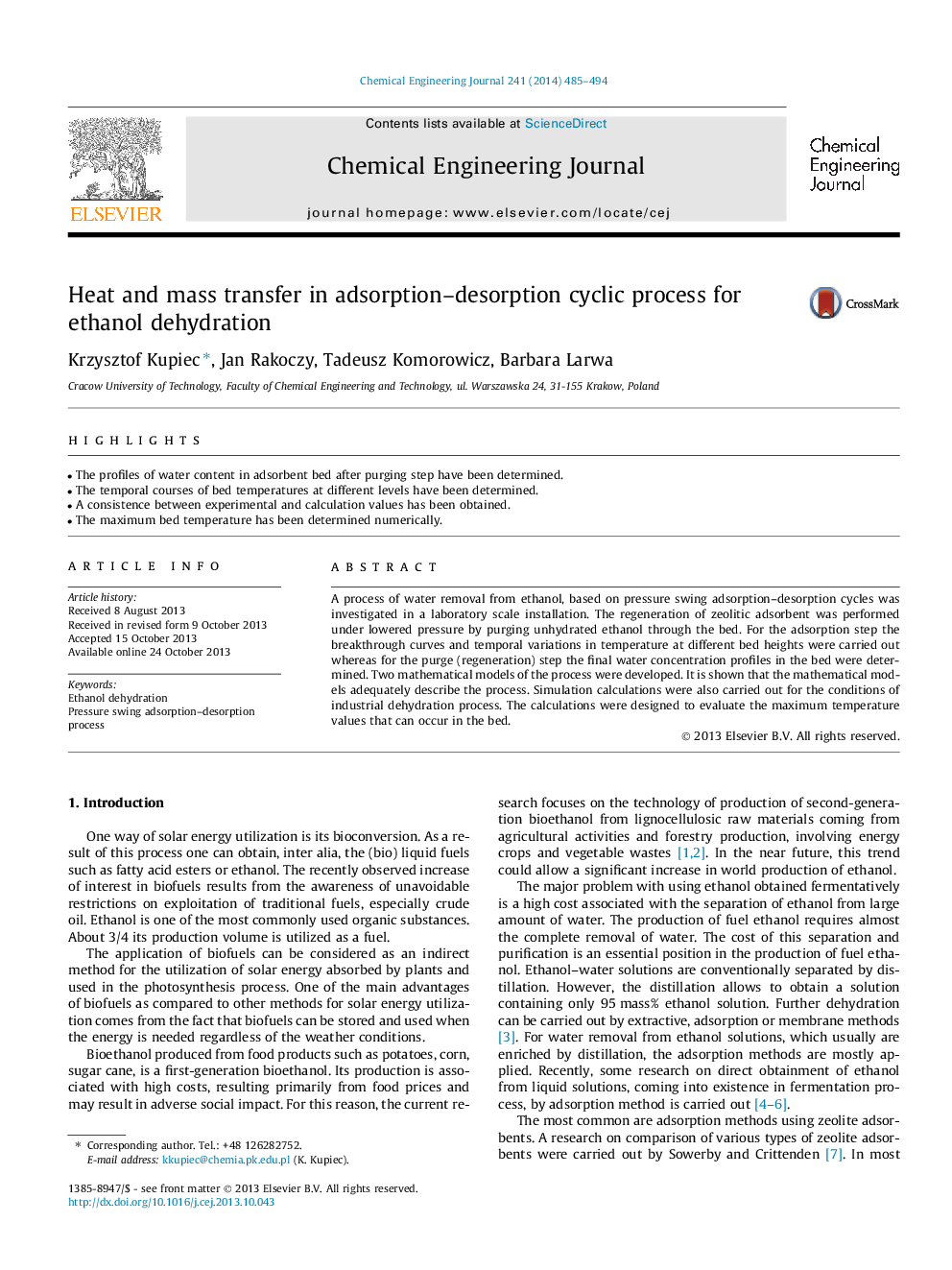| Article ID | Journal | Published Year | Pages | File Type |
|---|---|---|---|---|
| 147597 | Chemical Engineering Journal | 2014 | 10 Pages |
•The profiles of water content in adsorbent bed after purging step have been determined.•The temporal courses of bed temperatures at different levels have been determined.•A consistence between experimental and calculation values has been obtained.•The maximum bed temperature has been determined numerically.
A process of water removal from ethanol, based on pressure swing adsorption–desorption cycles was investigated in a laboratory scale installation. The regeneration of zeolitic adsorbent was performed under lowered pressure by purging unhydrated ethanol through the bed. For the adsorption step the breakthrough curves and temporal variations in temperature at different bed heights were carried out whereas for the purge (regeneration) step the final water concentration profiles in the bed were determined. Two mathematical models of the process were developed. It is shown that the mathematical models adequately describe the process. Simulation calculations were also carried out for the conditions of industrial dehydration process. The calculations were designed to evaluate the maximum temperature values that can occur in the bed.
